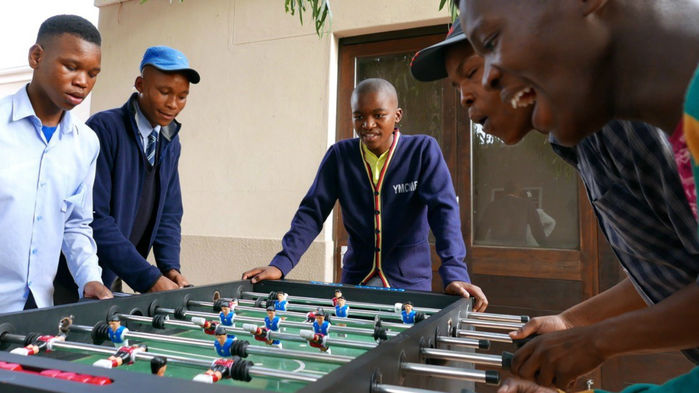Friday is World AIDS Day, and pronouncements once again are making proud declarations of the many strides made against HIV in the past year.
But this 1 December there’s also a loud lament about treatment shortcomings within a surprising demographic: boys and men.
The Joint United Nations Programme on HIV/AIDS (UNAIDS) has bluntly titled its new report Blind Spot and notes in its first sentence that focusing on boys and men may seem “counterintuitive” given the gender inequalities that often put girls and women at a disadvantage when it comes to infection and treatment. But data speak. Overall, more than 20 million of the 37 million HIV-infected people in the world now receive antiretroviral (ARV) drugs, which both save lives and prevent transmission. But in people 15 years of age or older, ARV coverage of men is only 47% compared with 60% for women.
Men suffered 58% of the 1 million AIDS deaths in the world in 2016, and in sub-Saharan Africa, the hardest hit region, men only account for 41% of the HIV-infected population. But men there are 20% less likely than women to know their HIV status, and men who do start ARVs are less likely to stick with their treatment and drive viral levels down to undetectable levels—the cornerstone to thwarting transmission. “I went back more than 20 years, and we didn’t have any reports on men,” says UNAIDS Director Michel Sidibé in Geneva, Switzerland. “We had a blind spot ourselves there.”
The new UNAIDS report is “bold and timely,” says James McIntyre, an HIV/AIDS clinician and CEO of the Anova Health Institute in Johannesburg, South Africa, noting it mirrors an article he co-authored 6 years ago with the same title. “For too long, we have persisted on focusing all our HIV efforts on girls and women, hoping, in vain, that men would somehow follow,” McIntyre says. “The reality is that men won’t or can’t use health services as we would expect them to, and the general health gap for men widens the HIV prevention and care gap.”
McIntyre stresses that it’s a “trap” to think that increasing the focus on men somehow will detract from efforts to protect women. “It is only when HIV services take up their responsibility to look after men that men will be able to take up their responsibility to protect women,” he says.
It is essential for us to realize that we will never end this epidemic without targeting men.
Epidemiologist Chris Beyrer at Johns Hopkins Bloomberg School of Public Health in Baltimore, Maryland, who also has published about disparities in HIV/AIDS treatment for men, says the problem stems from how many countries built the responses to their epidemics. Low-income countries in particular often focused their program on mothers and children, in part because they relied on substantial assistance from two programs—the U.S. President’s Emergency Plan for AIDS Relief and the Global Fund to Fight AIDS, Tuberculosis and Malaria—that began nearly 15 years ago and emphasized those populations. “The very first programs rolled out were prevention of mother-to-child transmission and HIV infrastructure was built on the infrastructure for maternal and child health,” Beyrer says. “In the poorest, weakest countries that was the only health infrastructure.”
Beyrer says many men do not seek HIV tests and care because they don’t feel welcome at clinics. “They’re full of screaming babies and people who stay all day in the clinic,” says Beyrer, who notes men often decide they cannot afford to miss work to take care of their health. Sidibé says machismo about using condoms and taking HIV tests also keeps men from seeking care. “We have to remove this toxic masculinity.”
The report offers several strategies to address the blind spot, including offering HIV tests at the workplace or self tests that can be done at home. It notes that a large-scale study in Kenya and Uganda called SEARCH has had much success by testing men for many diseases during community events and then immediately linking anyone who tests positive for HIV to care. Grassroots Soccer, a program in 45 countries, uses the popular sport as a vehicle to conduct HIV/AIDS education for boys and men. Carefully crafted social media and text message “nudges” can also help remind men to book appointments or adhere to treatment.
“It is essential for us to realize,” says McIntyre, “that we will never end this epidemic without targeting men.”
